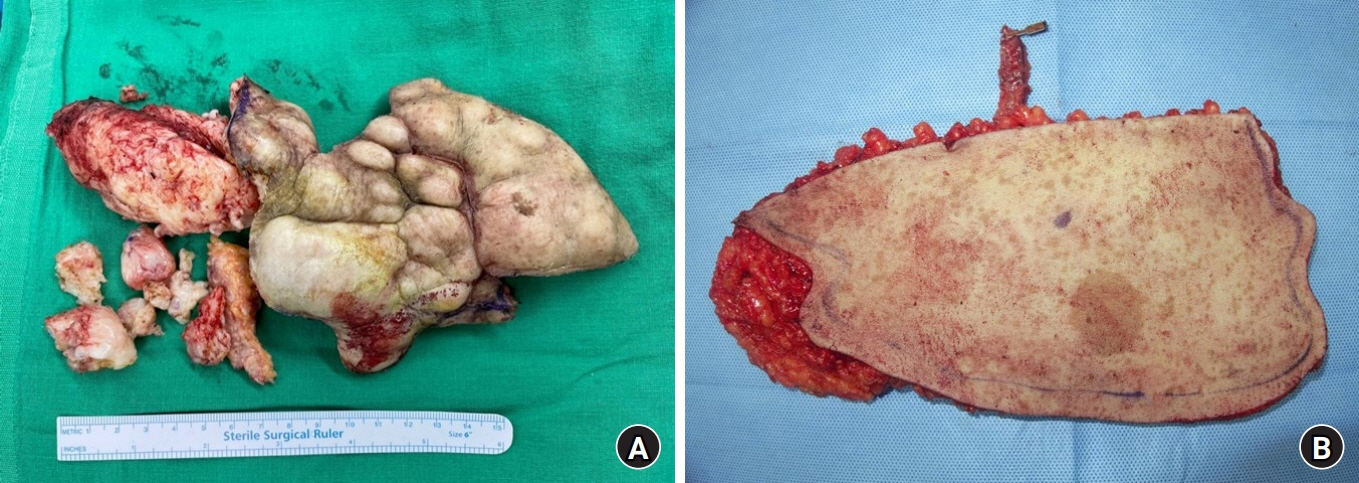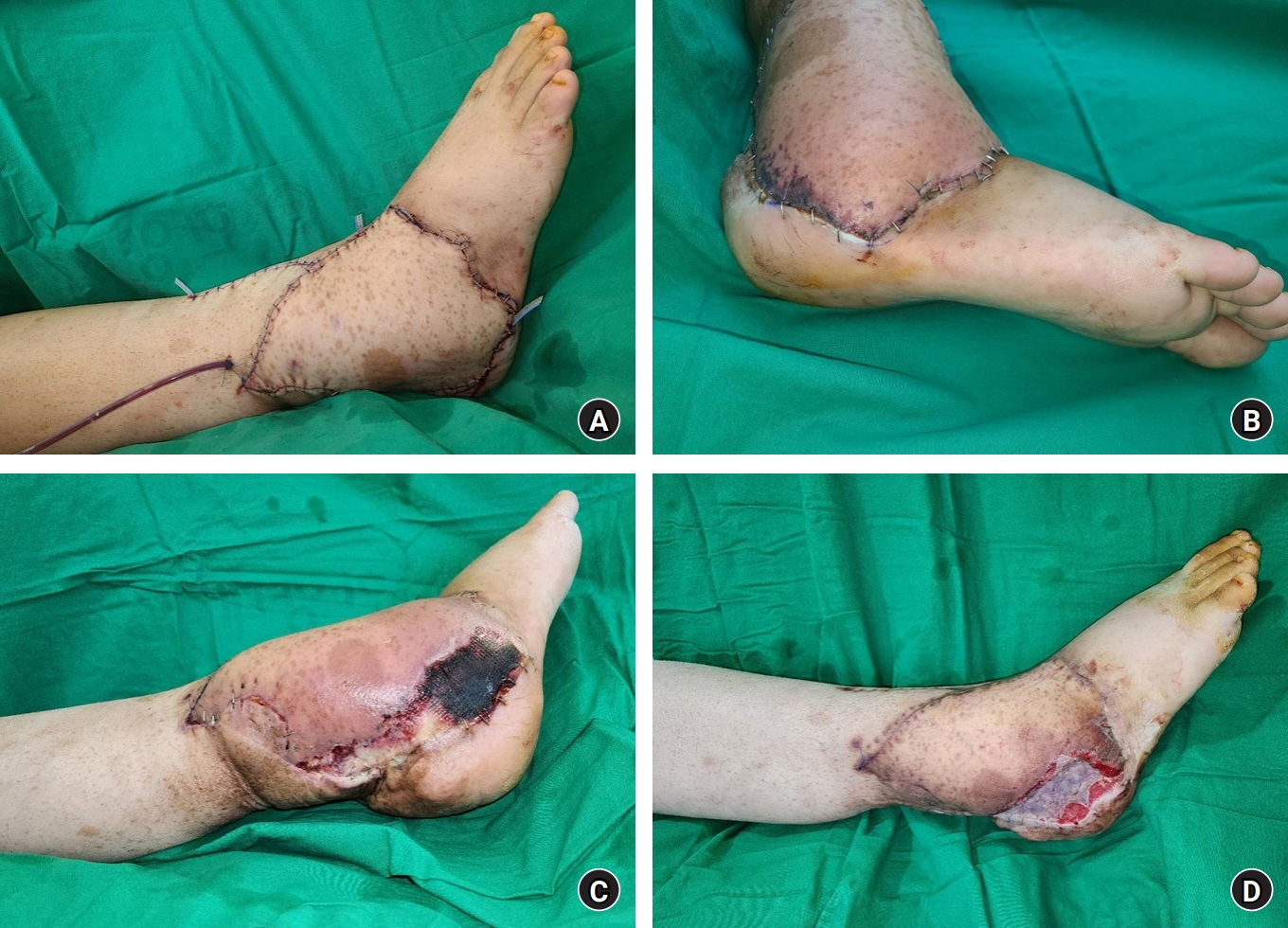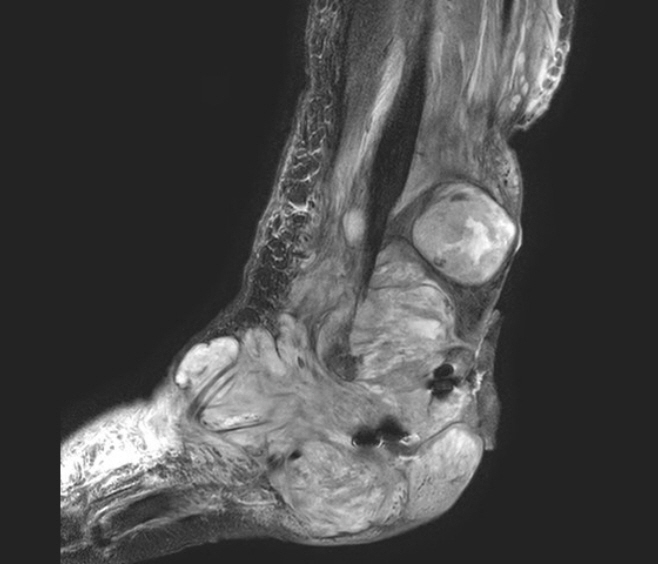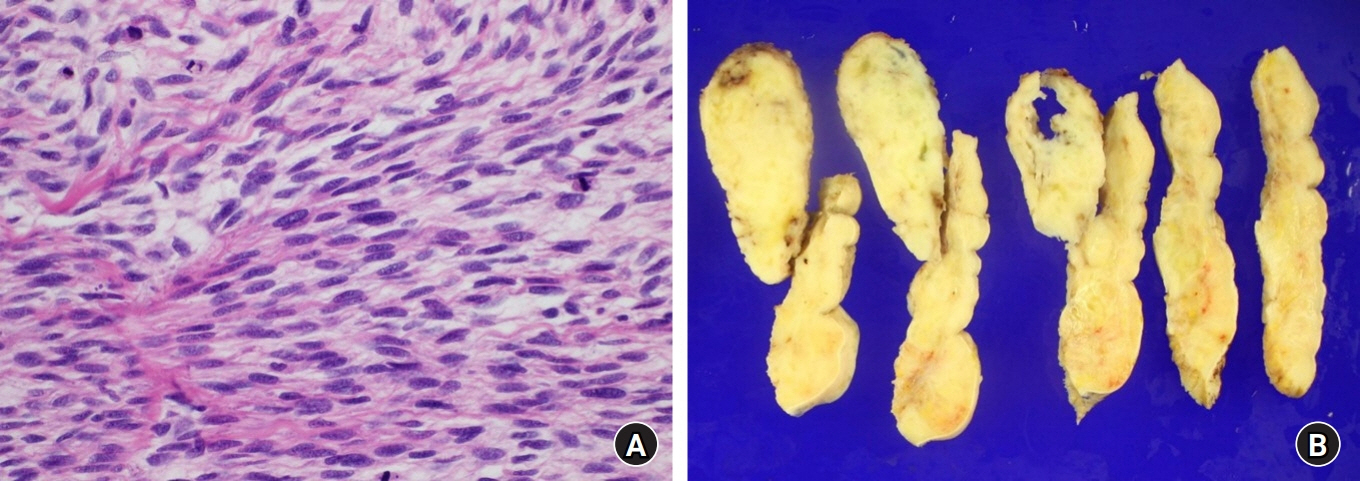Arch Hand Microsurg.
2023 Jun;28(2):114-118. 10.12790/ahm.23.0007.
Resurfacing the defect from wide excision of a malignant peripheral nerve sheath tumor based on a thoracodorsal artery perforator free flap: a case report
- Affiliations
-
- 1Department of Plastic and Reconstructive Surgery, Hanyang University College of Medicine, Seoul, Korea
- KMID: 2542563
- DOI: http://doi.org/10.12790/ahm.23.0007
Abstract
- Malignant peripheral nerve sheath tumors (MPNSTs) are rare, aggressive soft tissue sarcomas with a high rate of recurrence and metastasis. Limb salvage surgery with free flap reconstruction is a viable option for selected patients with MPNSTs, but careful consideration should be given to the risk of recurrence. This case report describes a 26-year-old male patient with a recurrent, aggressive, high-grade MPNST who underwent limb salvage surgery with thoracodorsal artery perforator free flap reconstruction. Despite the surgical intervention, local recurrence of the MPNST was detected, and below-knee amputation was ultimately recommended. This case highlights the importance of early, definitive treatment decision-making in cases of aggressive, high-grade MPNSTs. Close postoperative monitoring and early detection of recurrence are crucial for achieving optimal outcomes in patients with MPNSTs undergoing limb salvage surgery with free flap reconstruction.
Figure
Reference
-
References
1. Somatilaka BN, Sadek A, McKay RM, Le LQ. Malignant peripheral nerve sheath tumor: models, biology, and translation. Oncogene. 2022; 41:2405–21.
Article2. Evans DG, Baser ME, McGaughran J, Sharif S, Howard E, Moran A. Malignant peripheral nerve sheath tumours in neurofibromatosis 1. J Med Genet. 2002; 39:311–4.
Article3. Stucky CC, Johnson KN, Gray RJ, et al. Malignant peripheral nerve sheath tumors (MPNST): the Mayo Clinic experience. Ann Surg Oncol. 2012; 19:878–85.
Article4. James AW, Shurell E, Singh A, Dry SM, Eilber FC. Malignant peripheral nerve sheath tumor. Surg Oncol Clin N Am. 2016; 25:789–802.
Article5. Theos A, Korf BR; American College of Physicians; American Physiological Society. Pathophysiology of neurofibromatosis type 1. Ann Intern Med. 2006; 144:842–9.
Article6. Farid M, Demicco EG, Garcia R, et al. Malignant peripheral nerve sheath tumors. Oncologist. 2014; 19:193–201.
Article7. Nakamura JL, Phong C, Pinarbasi E, et al. Dose-dependent effects of focal fractionated irradiation on secondary malignant neoplasms in Nf1 mutant mice. Cancer Res. 2011; 71:106–15.8. Miettinen MM, Antonescu CR, Fletcher CDM, et al. Histopathologic evaluation of atypical neurofibromatous tumors and their transformation into malignant peripheral nerve sheath tumor in patients with neurofibromatosis 1-a consensus overview. Hum Pathol. 2017; 67:1–10.
Article
- Full Text Links
- Actions
-
Cited
- CITED
-
- Close
- Share
- Similar articles
-
- Reconstruction of the Soft Tissue Defect Using Thoracodorsal Artery Perforator Skin Flap
- Reconstruction of Greater Trochanteric defect using Lumbar Artery Perforator Free Flap: A Case Report
- Reconstruction of a Mangled Hand with a Thoracodorsal Artery Perforator Free Flap: A Report of Two Cases
- Malignant Peripheral Nerve Sheath Tumor of Abdomen
- Thinned Thoracodorsal Perforator-Based Cutaneous Free Flap






